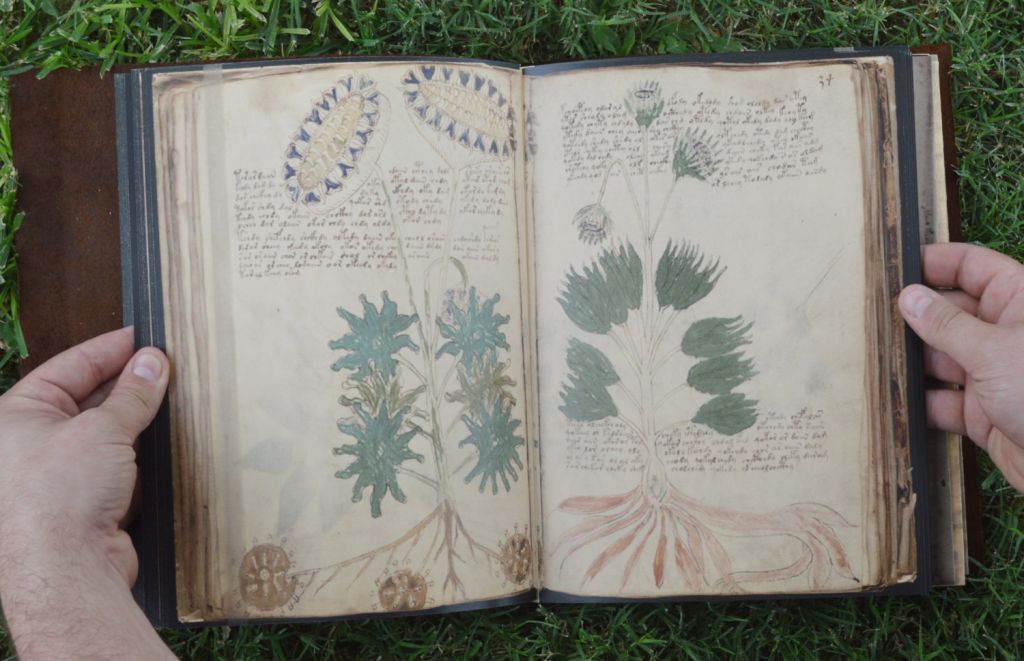The scientist breaks the code of the mysterious manuscript of Voinich

One scientist succeeded where countless cryptographers, linguists, and computer programs failed. He cracked the code of one of the most famous mysterious texts in the world, the Voynich manuscript.
Although the purpose and meaning of this manuscript eluded scientists for more than a century, it took Dr. Gerard Cheshir only two weeks, using a combination of ingenuity and lateral thinking , to determine the language and writing system of this world-famous incomprehensible document.
The Voynich manuscript is a medieval, handwritten and illustrated text that dates from a carbon analysis to the mid-15th century.
')
It is named after Wilfried Wojnicz, a Polish merchant and antique collector who acquired the manuscript in 1912.
Now it is stored at Yale University, where it is listed under MS408 in the library of rare books and manuscripts Beineke .
Among those who tried to crack the code of the manuscript were Alan Turing and his colleagues from Bletchley Park. The FBI also tried to crack it during the Cold War, perhaps thinking that it could be communist propaganda.
Dr. Cheshire, a research fellow at the University of Bristol, described how he successfully deciphered the code of the manuscript and at the same time discovered the only example of the Proto-Roman language.
“I experienced several insights during the decoding of the code, after which I felt uncertainty and excitement when I realized the magnitude of the achievement, from the point of view of importance for linguistics and discovery about the origin and content of the manuscript,” he said.
“What it reveals is even more amazing than the myths and fantasies that it engendered.”
"For example, the manuscript was compiled by Dominican nuns as a reference for Maria of Castile, Queen of Aragon , who was Catherine of Aragon's great-aunt."
"It is also not an exaggeration to say that this work is one of the most important events at the moment in Romance linguistics."

“The manuscript is written in the Proto-Roman language - the ancestor of those dialects of this language family, which is now spoken in Portugal, France, Spain and other countries. It was widely used in the Mediterranean during the Middle Ages, but almost no one wrote on it, since Latin remained the language of nobility, church and state. Therefore, this language has disappeared without a trace, ”the scientist said.
Now the language and writing of the manuscript are described, the pages of the manuscript were open to scholars, this is true, linguistic and informative content.
Dr. Cheshire also explained in terms of linguistics, which made this manuscript so unusual.
“She uses a dead tongue . His alphabet is a combination of unfamiliar and more familiar characters. ”
“It does not include punctuation marks, although some letters have options for indicating punctuation or phonetic accents,” he said.
All letters are lowercase and no double consonants. There are diphthongs, trifthongs, complex vowels of four and even five elements to reduce phonetic components. Also includes a few words and abbreviations in Latin.
The next step is to use the knowledge gained to complete the translation of the manuscript and compile a lexicon. Dr. Cheshire acknowledged that it would take some time and funding, since the manuscript consists of more than two hundred pages.
“Now the language and writing of the manuscript are described, the pages of the manuscript were open to scholars, this is true, linguistic and informative content,” he added.
The “Language and Writing MS408 (Voynich Manuscript)” document was published in the journal Romance Studies.
Scan manuscript of voynich
Source: https://habr.com/ru/post/452118/
All Articles